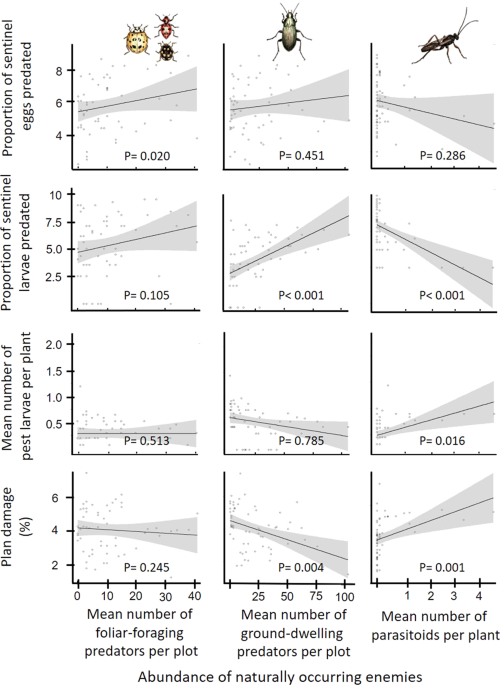Getting The Eco Bed Bug Exterminators Dc To Work
Table of ContentsLittle Known Questions About Eco Bed Bug Exterminators Dc.The Basic Principles Of Eco Bed Bug Exterminators Dc The Main Principles Of Eco Bed Bug Exterminators Dc Not known Facts About Eco Bed Bug Exterminators DcThe 15-Second Trick For Eco Bed Bug Exterminators Dc
Due to the fact that pesticides are harmful, they are likewise potentially dangerous to humans, pets, various other organisms, and the environment. Individuals that make use of chemicals or routinely come in call with them have to recognize the family member toxicity, possible wellness results, and preventative measures to lower direct exposure to the items they utilize. Danger, or risk, of utilizing pesticides is the potential for injury, or the degree of danger associated with using a pesticide under a provided set of conditions.
Nevertheless, applicators can reduce or nearly eliminate exposure-- and hence lower hazard-- by adhering to the tag guidelines, making use of personal safety clothes and tools (PPE), and managing the pesticide correctly. Even more than 95 percent of all pesticide exposures come from facial direct exposure, largely to the hands and lower arms. By putting on a set of unlined, chemical-resistant handwear covers, this sort of direct exposure can be virtually eliminated.
The damaging effects that happen from a single exposure by any path of entry are termed "severe impacts." The 4 paths of exposure are dermal (skin), inhalation (lungs), oral (mouth), and the eyes. Intense poisoning is figured out by taking a look at the facial toxicity, inhalation toxicity, and dental poisoning of examination animals.
The Ultimate Guide To Eco Bed Bug Exterminators Dc
Severe poisoning is measured as the quantity or focus of a toxicant-- the a.i.-- called for to eliminate 50 percent of the animals in a test populace. This procedure is generally shared as the LD50 (dangerous dose 50) or the LC50 (dangerous focus 50). Additionally, the LD50 and LC50 values are based upon a solitary dosage and are videotaped in milligrams of chemical per kilogram of body weight (mg/kg) of the examination animal or in parts per million (ppm).
The reduced the LD50 or LC50 value of a pesticide item, the better its toxicity to human beings and pets. Pesticides with a high LD50 are the least harmful to human beings if made use of according to the directions on the item tag. The persistent poisoning of a pesticide is established by subjecting guinea pig to long-term direct exposure to the active component.
The persistent poisoning of a chemical is extra challenging than severe poisoning to identify via lab evaluation. Products are classified on the basis of their relative acute toxicity (their LD50 or LC50 values). Pesticides that are identified as extremely poisonous (Poisoning Group I) on the basis of either dental, facial, or inhalation toxicity should have the signal words threat and POISON published in red with a head and crossbones icon plainly presented on the front panel of the package label.
The acute (single dose) oral LD50 for chemical products in this group varies from a trace total up to 50 mg/kg. As an example, exposure of a few decreases of a product taken orally might be fatal to a 150-pound individual. Some pesticide items have just the signal word risk, which informs you nothing about the intense poisoning, just that the product can trigger severe eye damage or serious skin inflammation
Things about Eco Bed Bug Exterminators Dc
In this group, the severe dental LD50 imp source varieties from 50 to 500 mg/kg. A tsp to an ounce of this material could be deadly to a 150-pound person (how to get rid of bed bugs). Pesticide products identified as either somewhat poisonous or reasonably safe (Toxicity Groups III and IV) are required to have the signal word CAUTION on the pesticide label

A Biased View of Eco Bed Bug Exterminators Dc
All pesticide toxicity chemicalPoisoning worths the Consisting of, can be found on discovered product's Material Safety Data Sheet InformationMSDS). Chemical labels and MSDS can be gotten from merchants or produces. Furthermore, most items additionally have information that can be found online. The symptoms of pesticide poisoning can range from a moderate skin inflammation to coma and even death.
People also differ in their sensitivity to various levels of these chemicals. Some people may reveal no reaction to a direct exposure that might trigger severe disease in others (bed bug heat treatment). Since of potential health worries, pesticide customers and handlers must acknowledge the common indications and symptoms of pesticide poisoning. The impacts, or signs and symptoms, of chemical poisoning can be generally defined as either topical or systemic.
The Greatest Guide To Eco Bed Bug Exterminators Dc
Dermatitis, or inflammation of the skin, is approved as one of the most generally reported topical effect connected with chemical exposure. Symptoms of dermatitis range from reddening of the skin to breakouts and/or sores. Some individuals often tend to cough, wheeze, or sneeze when revealed to pesticide sprays. Some people react to the strong odor and annoying effects of petroleum extracts made use of as providers in pesticide products.
This sign usually subsides within a few minutes after an individual is eliminated from the direct exposure to the toxic irritant. Nonetheless, a response to a chemical product that causes somebody not just to sneeze and cough but also to create extreme acute respiratory symptoms is more likely to be a real hypersensitivity or allergic reaction.
Systemic impacts are quite various from topical results. They usually take place far from the original point of contact as an outcome of the pesticide being taken in into and distributed throughout the body. Systemic effects commonly include queasiness, throwing up, tiredness, headache, and intestinal problems. In sophisticated poisoning instances, the person may experience changes in heart rate, trouble breathing, convulsions, and coma, which can lead to death.